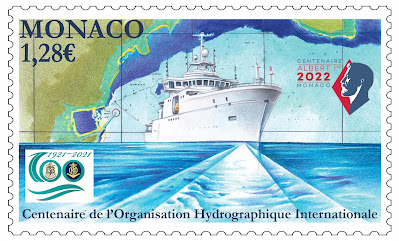World Hydrography Day is celebrated annually on June 21. This day was established by the International Hydrographic Organization (IHO) to raise awareness about the importance of hydrography and its role in ensuring safe navigation, protecting the marine environment, and supporting various marine activities.
Importance of Hydrography
Safe Navigation: Hydrography involves the measurement and description of physical features of oceans, seas, coastal areas, lakes, and rivers. Accurate hydrographic data is essential for creating nautical charts, which are crucial for the safe navigation of ships and other vessels.
Marine Environment Protection: Hydrography plays a significant role in understanding and managing marine ecosystems. It helps in monitoring changes in sea levels, mapping marine habitats, and supporting efforts to protect marine biodiversity.
Economic Activities: Hydrographic information supports various economic activities, including fishing, offshore oil and gas exploration, and marine construction. It also aids in disaster management by providing data for predicting and mitigating the impacts of natural disasters like tsunamis and hurricanes.
Scientific Research: Hydrographic data is vital for scientific research in oceanography, marine geology, and environmental science. It helps scientists understand ocean currents, sediment transport, and the impact of climate change on marine environments.
History and Significance
World Hydrography Day was first celebrated in 2006, following its adoption by the United Nations General Assembly. The day commemorates the establishment of the International Hydrographic Organization in 1921 and highlights the contributions of hydrographers to global maritime safety and the sustainable use of marine resources.
Themes and Celebrations
Each year, World Hydrography Day is celebrated with a specific theme to focus on different aspects of hydrography. The themes are chosen to highlight current issues, technological advancements, and the evolving role of hydrography in addressing global challenges.
Typical Activities
Educational Programs: Governments, maritime organizations, and educational institutions organize workshops, seminars, and conferences to educate the public and industry professionals about the importance of hydrography.
Exhibitions and Demonstrations: Exhibitions showcasing hydrographic equipment, technologies, and projects are often held. Demonstrations of hydrographic surveying techniques and tools are also conducted.
Public Awareness Campaigns: Campaigns using social media, publications, and public events are launched to raise awareness about the significance of hydrography.
Recognition of Hydrographers: The day also serves to recognize and honor the contributions of hydrographers and their efforts in ensuring maritime safety and environmental protection.
Conclusion
World Hydrography Day emphasizes the critical role of hydrography in ensuring the safe and sustainable use of marine and freshwater resources. It is a day to acknowledge the contributions of hydrographers and to promote awareness about the importance of hydrographic data in various aspects of maritime and environmental management.

No comments:
Post a Comment